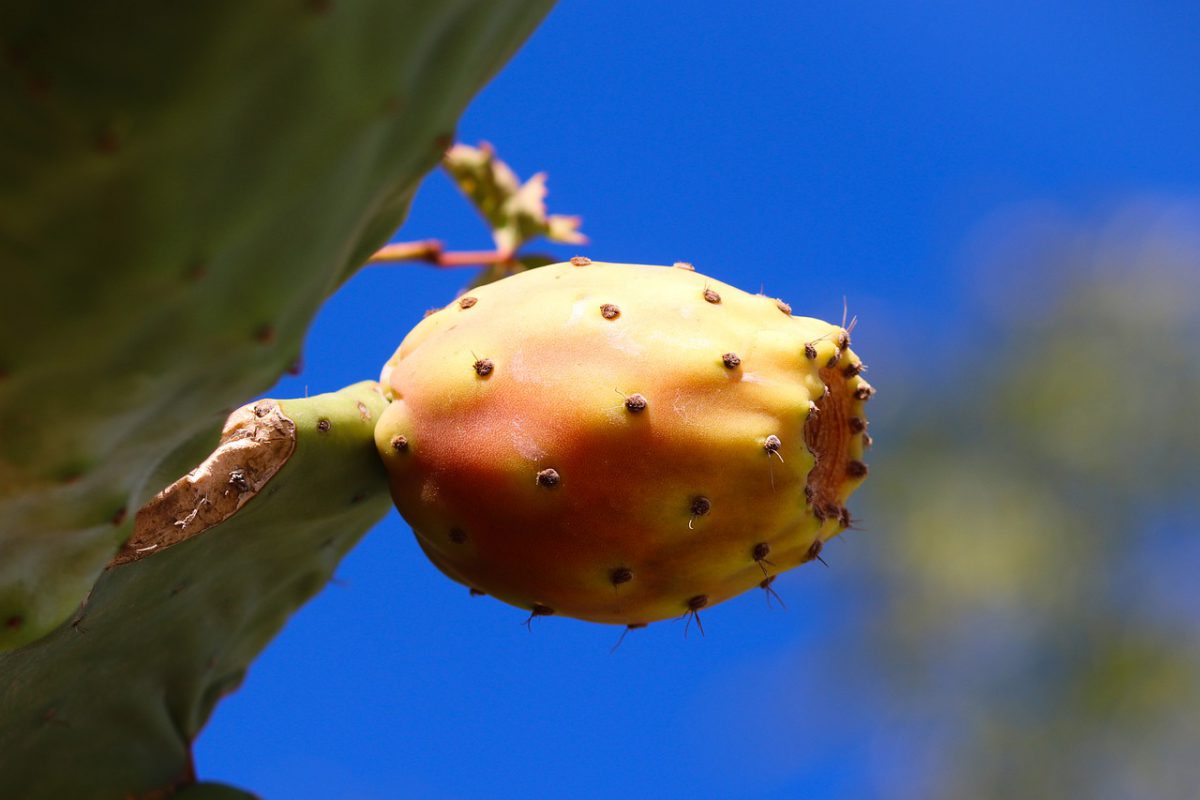
Crete is a land of plenty every season. Even winters take care of the islanders with abundant olives crops that produce the prized olive oil used by Cretans in everything from salads to pies and cakes.
Summers are long and hot, so having fresh fruit at the table is not just an indulgence but a necessity. So take advantage of the seasonal summer fruits that grow on Crete island when you vacation here.
Watermelon
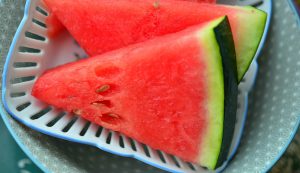
All the farmers’ markets, supermarkets, and minimarkets on the island stack watermelons in the summer. You’ll even find vendors on the side of the road offering the gigantic fruit at attractive prices. Tavernas will serve it as a complimentary dessert with raki (tsikoudia) or rakomelo (raki with honey) at the end of a meal. There’s no way you can miss the chance to taste this Cretan summer favorite when you visit the island.
If dessert is not enough and you want to buy a watermelon to enjoy it in your room at the hotel you are staying, here are some tips for picking the best:
- Regardless of its size or variety, the watermelon should feel heavy.
- Check out the field spot: it should be colored (a dirty yellow-orange shade) and not white.
- Check out the webbing or “sugar spots:” if they are large and well developed, you’ve got a sweet watermelon.
- Tap the watermelon and listen for a hollow sound. If the sound is dull, the watermelon is rather too ripe or not ripe enough.
Watermelons benefit your health. They are 92% water, so they keep you hydrated. They are rich in vitamins C and A, and their high lycopene content helps lower cholesterol and blood pressure.
The entire watermelon is edible, including its rind. You could either juice the rinds or stir-fry them. Pickled watermelon rinds are a popular delicacy in some countries.
Figs
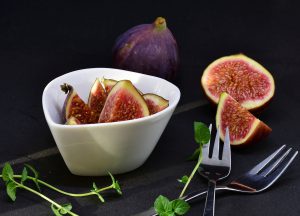
Fresh figs are delicious, sweet little niblets that go well on their own or a cheese platter. On Crete, their season covers the hottest summer months, from June to September. One small fig has under 40 calories, making for a scrumptious low-calorie snack.
Unlike watermelons, which are affordable and easy to come by, figs tend to be on the pricier side. But do buy a handful of fresh Cretan figs from the market if you get the chance. They are organic produce, and, besides their taste, they offer some health benefits. Fig consumption may help improve digestive health, as well as blood pressure and blood fat levels.
Mulberries
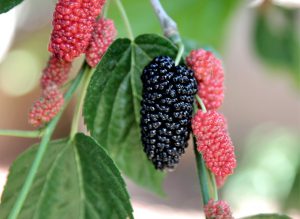
Mulberry trees grow in the wild, on the side of the road, although Cretans also plant them close to their homes to enjoy the ample leafy shade their canopies provide in the summer. Their fruits can be black, white, or red and are available from May to mid-July.
Some rural tavernas may offer them at the end of a meal, but you are most likely to find them for sale at the farmers’ market and in larger supermarkets. Feel free to pick some up if you see a tree by the roadside.
A 100-gram serving of mulberries has about 43 calories and a 88% content of water. They are low-carb and low-sugar fruits, which contain iron, potassium, and vitamins C and K, among others.
Consumption may help reduce excess fat, lower cholesterol levels, and improve blood sugar control.
Prickly Pears
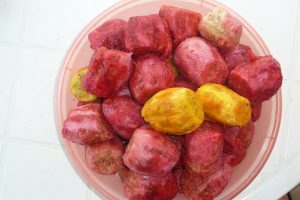
The prickly pear, or opuntia, named for the ancient Greek city Opus, is the fruit of the paddle cactus, in season from July until late fall. They are rarely served in tavernas, but you can either forage some in the wild (use gloves as they have thorns, which are hard to get rid of once they penetrate the skin) or buy them at the farmers’ markets or supermarkets.
To eat fresh prickly pears, you must remove their skin. Slice and discard both ends of the fruit. Make a lengthwise slice across the peel, deep enough to reach the flesh, but careful not to cut through the fruit. Peel the skin with your fingers or using a fork to hold the fruit and a paring knife to remove it.
One fruit has about 40 calories and contains amino acids, fatty acids, and antioxidants, as well as minerals like magnesium and potassium, and vitamin C. Consumption reduces cholesterol levels and body fat, and may help improve digestion.
Besides these seasonal summer fruits, you can always enjoy Cretan bananas and citrus grown locally. Ask the vendors about the provenience of their produce: they are proud to tell you everything about the fruits that thrive on the island.


